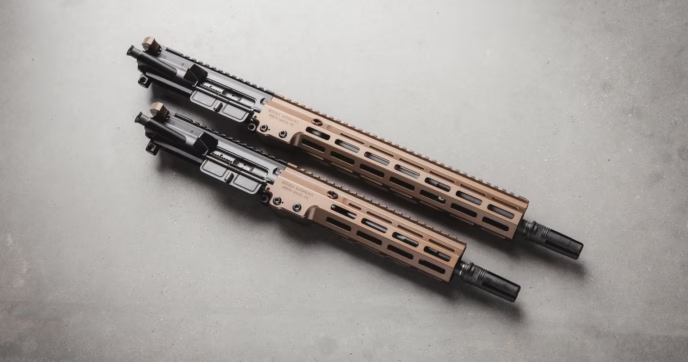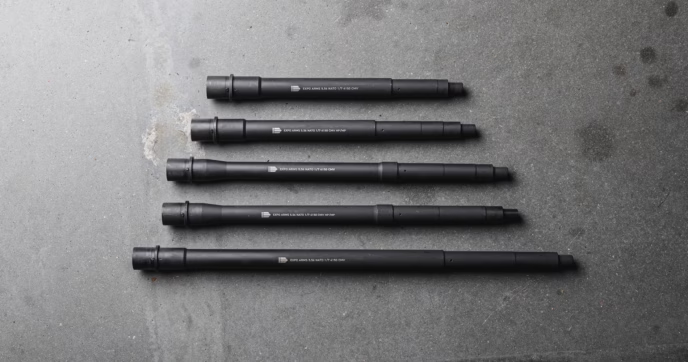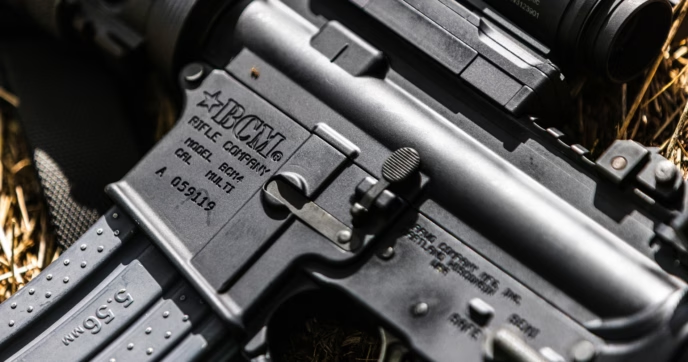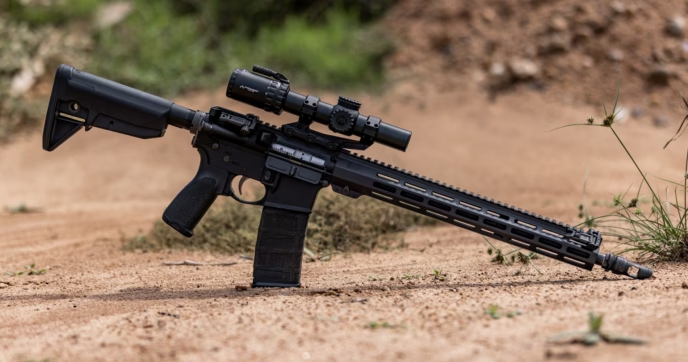Picture this, you’re building your dream rifle and looking at all the cool accessories to shop for, when you find the page dedicated to laser units and think to yourself, “I have GOT to get one of those.”
For years, laser sights have been in use by civilians, hunters, and military members, using them on their rifles for increased accuracy in low light environments and at night for a better reference of aim.
Accuracy is everything when shooting and adding a laser to your rifle can help. Even though the installation is easy, zeroing them can be a little tricky.
Don’t worry, though, we’re going to get you up to speed on the different types of rifle lasers available, how they’re best used, and how to sight one in on your rifle.
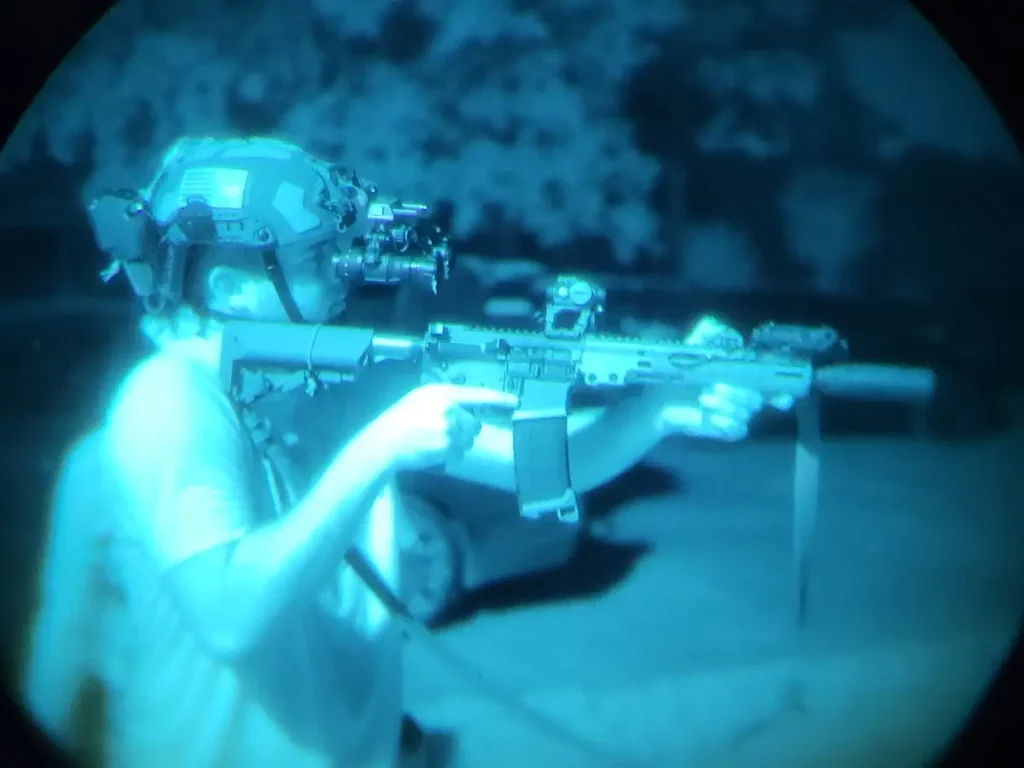
What are Laser Sights?
Simply put, a laser sight is a device which is mounted to the rifle that projects a laser beam onto the target down range. These devices aid in quick target acquisition and aiming, but they differ from traditional red dot sights. A red dot sight uses an LED emitter to project a dot within the optic itself while a laser sight projects the beam directly onto the target, providing you with a secondary point of aim and sight reference.
When laser sights were first put into use, they were exceptionally bulky units that added a ton of weight to your firearm and had a battery life measured in minutes. However, laser sights today come in much more manageable form factors resulting in less weight added to the end of your rifle and have much more efficient electronics for longer battery life. Also, you’ll often find that some lasers are a standard addition with some weapon lights.
Lasers work well in low-light situations when it may not be easy to gain a target with iron sights or a red dot sight. On rifles, this gives you the advantage of being able to see where your potential point of impact is going to be, making it a valuable addition to your setup. Whether on an AR-15, AKM, or other type of rifle, a laser sight can be beneficial to have for a multitude of scenarios.
As mentioned previously, our military uses laser sights to get a quick zero on targets in situations where they can’t shoulder their rifles, like when in vehicles, or close quarters. Operators will often use them at night. IR-Lasers or infrared lasers are used with night optical/observation devices or NODs. NODs use image-intensifying photocathode technology to pick up on faint sources of light and amplify them, allowing the user to see at night. This means you could use an IR laser, which is invisible to the human eye, to designate a target in low light environments.
Military grade laser sights like the PEQ-15 come equipped with an IR light in addition to the laser. This allows you to activate a light that is invisible to the human eye but illuminates a target when using NODs.
IR lasers have applications outside of military use as well, especially when it comes to hunting at night. By utilizing NODs or other thermal imaging devices, hunters can get an accurate sight picture on their prey without giving away their position. Thermals, IR lasers and NODs are often used in wild hog and coyote hunting, but it’s commonly used on other nocturnal animals as well. For people not into hunting, many will use them to target shoot at night or in low light environments.
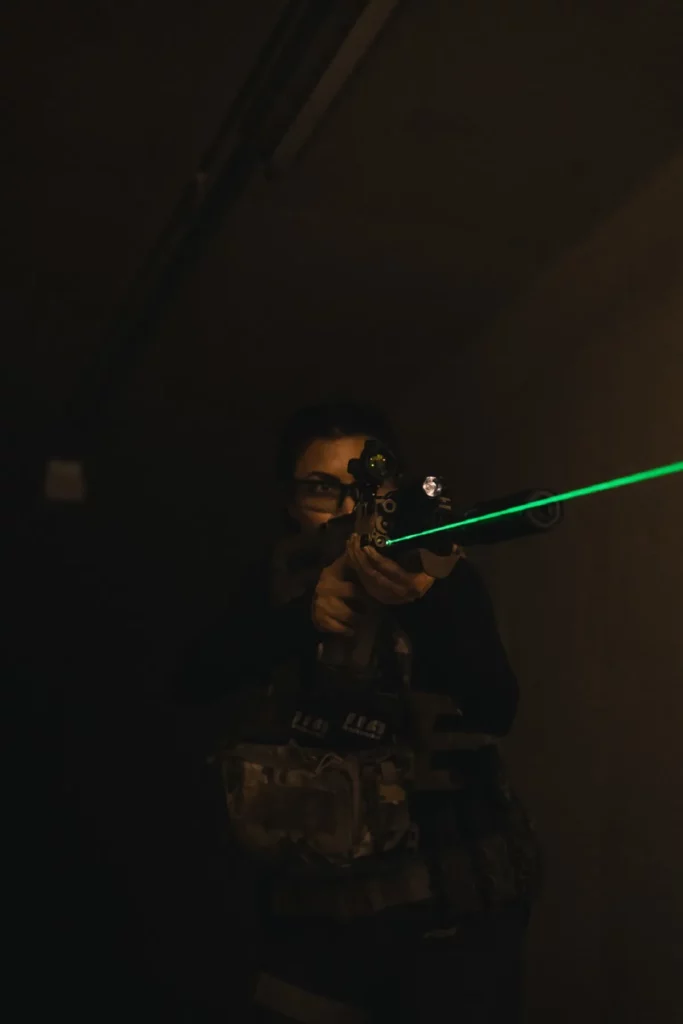
Where to mount your laser
Mounting your laser on your rifle is going to be determined by what type of rifle you own, but the same general rule applies for all. Wherever you have your laser sight mounted on your rifle, make sure it is in a place that it can be easily activated when needed. A lot professional operators prefer to mount their lasers at the 12 O’clock position. This position reduces the amount of horizontal deviation between the emitter diode and the bore of your rifle. Providing better balance, this position also eliminates the chance of the user blocking the laser accidentally if you’re shooting braced against a solid surface like a wall or tree.
AR-15 Rifles
AR-15 platform rifles are some of the easiest rifles to mount accessories to. Their long hand guards and uninterrupted picatinny top rails allow for near-endless accessory configurations, perfect for AR-15 laser sights. Since most AR handguards have M-LOK slots, some laser sights come compatible with M-LOK attachment they can be mounted to the handguard in any position; while not always the case, mounts can be purchased as well to allow M-LOK attachment. Additionally, some sights are integrated into other accessories like angled foregrips. Viridian laser sights like the HS1 Handstop is an angled foregrip that incorporates a red laser sight. Regardless of what AR laser you choose, the adaptability of the handguard provides a lot of space for different configurations, making it easy to find what setup best fits your needs.
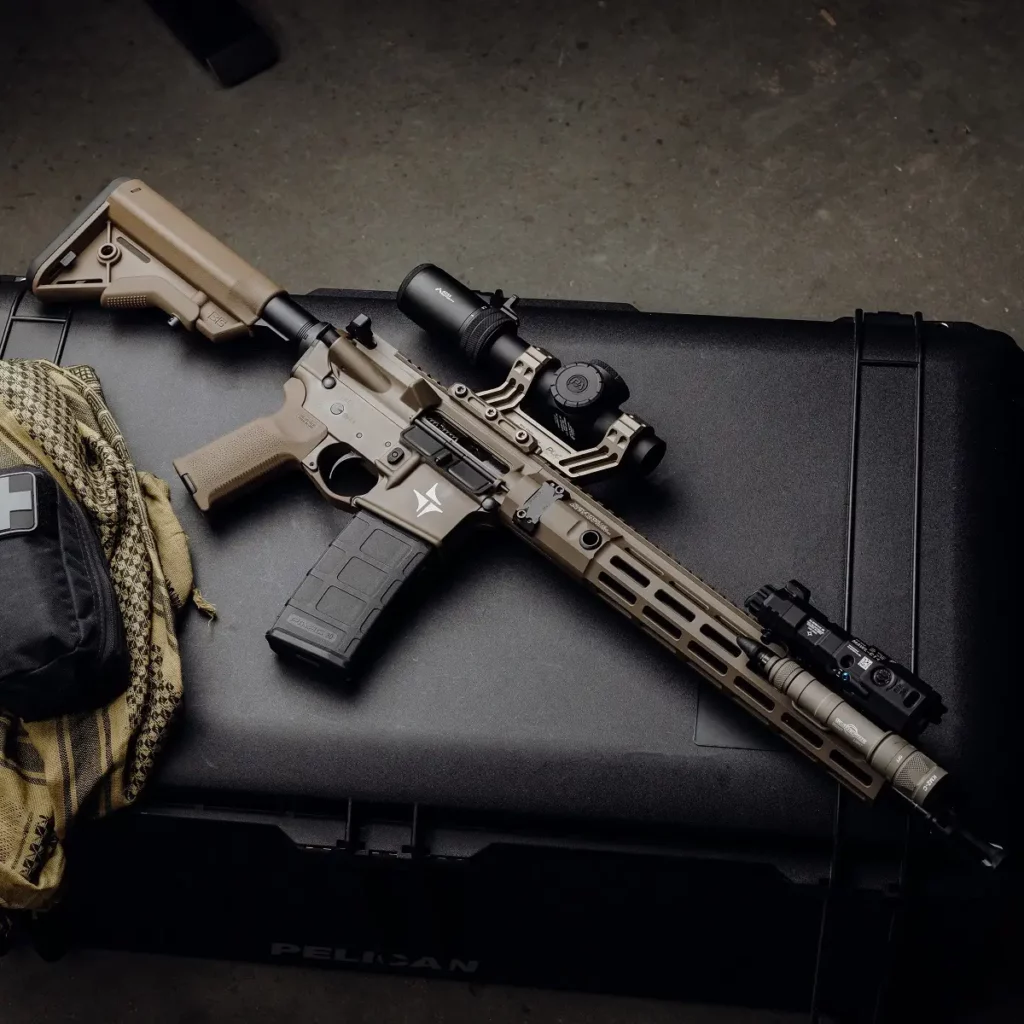
Shop All AR-15 Rifles
AK-47/74/AKM Rifles
AK-47/74/AKM style rifles can be great platforms to mount lasers to, as long as you are willing to do the work to mount a more modern handguard. Modern AK handguards/furniture includes more picatinny rail sections and M-LOK slots, making them as versatile as AR-15s. However, it gets a little tricky when using standard or traditional AK furniture.
Wooden handguards, while aesthetically beautiful, don’t have any mounting surface unless alterations are made. If this is the case for your AK, you can use a barrel mount to attach an AK laser sight to your rifle. Barrel mounts clamp onto the barrel of your rifle, giving you another point to attach accessories.
AK furniture manufacturers like SLR Rifleworks, Sureshot USA, and Midwest Industries make great rail systems for AK Rifles, giving them a similar degree of customizability, like that of an AR-15 with a free float handguard.
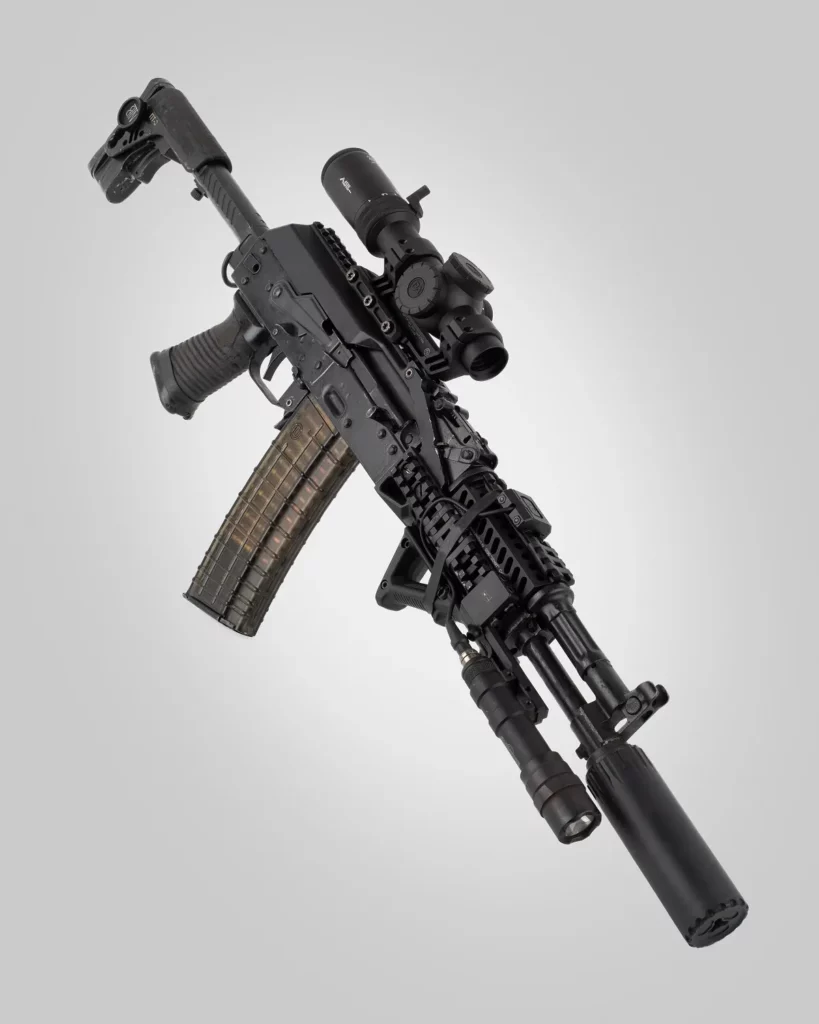
Bolt Action Rifles
If you’re adding a laser to your bolt-action rifle, you won’t have as many options as you would for an AR-15 or AKM with modern furniture. While there are stock and chassis options for bolt actions that incorporate M-LOK slots and additional picatinny space, that isn’t the case for most. If you have additional picatinny space, you can mount your laser sight under your scope if there is room. If there isn’t room under the optic, you can install the laser to a picatinny offset, or to a mount that fits over the scope.
Aftermarket scope mounts, like those from Reptilia Corp, have the option to include additional optic mounts or picatinny space on the top of the scope mount. While effective, sometimes they just aren’t an option for your rifle setup. Fortunately, barrel mounts can securely mount a laser to your rifle.
Just like for AKs, barrel mounts have an additional short picatinny rail section attached to them, allowing the user to mount accessories to their rifle. Not only are these secure, but they can hold zero well, so long as it’s installed properly.
However, while they can work in a pinch, these mounts can throw off your barrel harmonics. So, while they are an option, we don’t recommend using them; instead, we recommend that you opt for a scope mount with an additional picatinny rail section or mount it to an additional attachment mount, if your rifle has them.
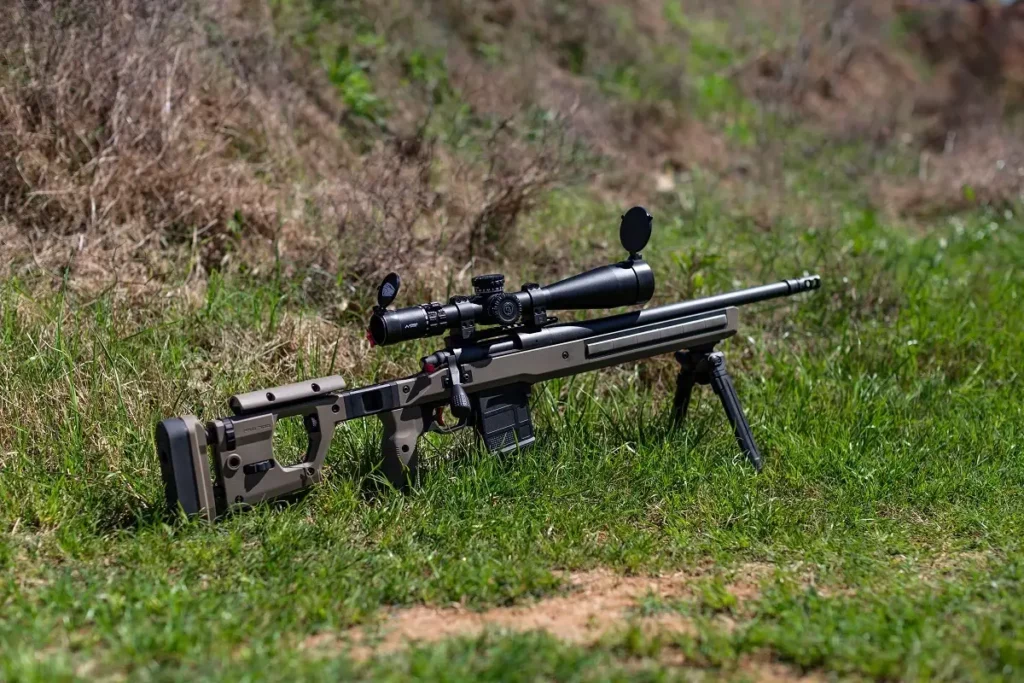
How to Zero your Rifle
Types of Zeroes
Now that your laser is mounted, you’re ready to zero it in. Regardless of the type of rifle you have, the process of zeroing your rifle’s laser is going to be the same. There are two different zeroes you can utilize: parallel and convergent zeroes.
Parallel Zero: the beam is zeroed to run parallel to the bore of the rifle, creating an offset sight reference. With this method, there is no need to compensate for range, instead you will need to remember that there is an offset between your laser and your bore. For example, if your laser is mounted on the right side of your rifle with a 1.5-inch offset to your bore, your projectile will land 1.5 inches away, on the left side from the projected beam. Because the beam runs parallel to your barrel, you don’t have to take range into consideration, except when shooting at farther distances where bullet drop is a factor (but you likely won’t even see your laser at these distances). At closer ranges though, there is no need to gauge distance since the beam is parallel to the rifle’s bore.
Convergent Zero: the beam is zeroed to converge with the bore of the rifle at your zero distance. For example, if you zero your rifle laser sight at 25 yards, your laser will pinpoint where your projectile will go. While this is an excellent method for zeroing, you will need to keep in mind that if you are closer or farther than 25 yards away from your target, your projectile will not impact exactly where the laser point is. This zeroing method works great if you want an accurate representation of where your projectile is going to land. Though you need to factor in distance when shooting using this zeroing method, it is incredibly accurate and useful when at the proper distance from your target.
Zeroing your Laser Sight
Once you’ve decided on a type of zero to go with, you’re ready to head to the gun range to begin sighting in your laser. Zeroing your laser may seem to be an arduous task, but fortunately, it isn’t.
You’ll need a few things before you go to the range to sight in your rifle laser sight. You will need your laser sighting tool (should come with your laser) unless yours has standard windage and elevation turrets, a stable shooting position ideally with sandbags or a shooting bench/rest, and a spare battery, just in case yours is low.
Make sure you have a stable position like a bench rest is imperative to getting a proper zero, since it allows you to have repeatable results. Start by setting up your shooting position at the distance you’ve chosen; some examples of common zero distances are 25, 50, and 100 yards away from the target. Set your rifle on the shooting rest of your choice and align your laser with the iron sights of the rifle or your optic reticle for reference. Next, fire a 3 round test group. This test group will give you a reference point for your laser alignment.
Based on where the impacts landed on the target, adjust the windage and elevation on your laser. Locate the two screws, or knobs, on your laser unit, and use the included laser adjustment tool to adjust your laser. The adjustment knob on the top is for elevation; turning the knob counterclockwise lowers the laser’s height, while turning it towards the clockwise raises it. Conversely, the side knob is for windage. Turning the knob clockwise adjusts your sight to the left, and turning it counterclockwise adjusts it to the right.
Keep repeating this process until your laser is zeroed to your liking. If it’s your first time zeroing in a laser on your rifle, you may overcompensate for your windage and elevation changes. Try to adjust your sight one to two clicks at a time, as this will minimize the risk of over-adjusting your sight. This will make your zeroing process much easier, removing the headaches that come from over adjustment.
Also, you can use zero a laser by using a boresighting laser. A boresighting laser comes in the shape of a cartridge and takes the place of your cartridge. It projects a beam out of the bore of your rifle, showing where bullets will impact on the target. By using one of these tools, you can adjust your laser without using any ammo. If you use this method, be sure to test your laser’s zero by shooting your rifle. It never hurts to double check your zero.
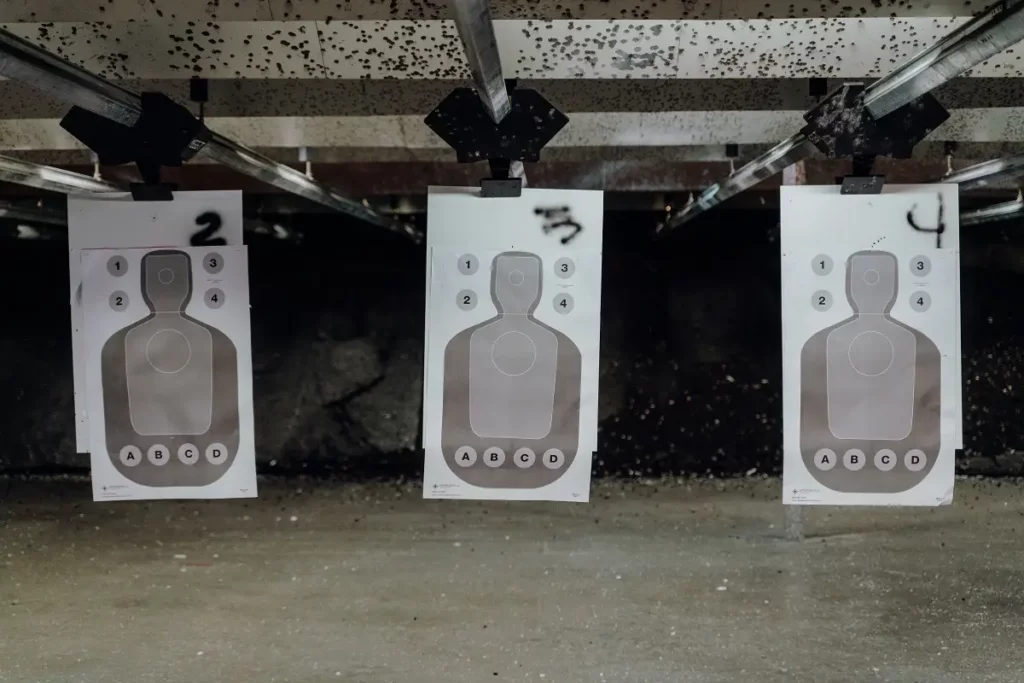
Uses for Lasers on Rifles
Well done, your laser has been zeroed! Depending on your rifle and your purpose for it, there are a lot of different uses for having a rifle laser. Below, we’ll go over some different uses for your newly zeroed laser.
Hunting
In Texas, and some other states, common nuisances like feral hogs, coyotes, and other predators are often hunted at night and day. Laser aiming devices with both visible and infrared spectrum beams provide better value for hunters, allowing them to be used at any time of day. Be sure to check your local state laws before hunting at night or with an artificial light device. Depending on the state, it is illegal to do so.
Home Defense
In a home defense situation, a laser can be a beneficial addition to your rifle. Since lasers work well in low light environments, all colors of lasers work well in indoor light. Just like we mentioned before, the laser can aid the user by allowing them to acquire a target quicker. It is essential to have a zeroed laser sight if you plan on using your rifle laser for defense, so take time to train and zero your rifle if this is going to be its purpose.

Choosing a Laser Sight
Now that you know about the different ways lasers can be used on your rifle, you need to choose one that best fits your purposes. Fortunately, there are a lot to pick from, each different in their own regard. It’s hard to pick just one when you don’t know the differences between them, so we’re going to give you a crash course on the different lasers available for you.
Visible Laser Sights
Visible or standard laser sights simply mount to your rifle and project a red or green laser onto your target. Coming in different sizes and colors, a standard laser sight doesn’t have any IR capabilities but can still be used for hunting or home defense. Depending on your needs, this variant could be all that you need. The simplicity of the design of stand-alone laser sights allows you to keep the rifle light, while enhancing your sight acquisition ability. For general target shooting, hunting, and home defense, a standard visible laser sight will work well. Some good brands for standard visible laser sights are iProtec and LaserMax.
Some rifle laser sights also include a weapon light system as well. Like pistol lasers, brands like Surefire and Streamlight have options that include both systems, allowing you to have access to both a light and a laser. While this isn’t very common, it is an option; however, if you would rather have two separate units, laser sights pair well with weapon lights. It is possible to link both the light and laser to the same tape switch as well, so long as both units have the proper connections. If you plan on running this kind of setup, be sure to check the descriptions to make sure you can run a dual switch set up. If you’re interested in running a weapon light with your laser, check out our blog on weapon lights here.
Also, these laser sights are more budget friendly when compared to other types of laser units. Not to say that the other variants are all expensive, but stand-alone laser sights with no other add-ons are usually much less expensive than IR lasers and weapon light/laser combo units.
IR Lasers
IR lasers are perfect for low light/nighttime use. Whether for recreational shooting or hunting, the ability to accurately hit targets at night is incredible. A popular choice for recreation and hunting is a Steiner laser.
Some IR laser units like the Steiner DBAL-D2 have both IR and visible spectrum lasers, allowing the user access to either a red or green laser without compromising the use of an infrared laser at night. Units like these are great because the visible laser comes from the same diode as the IR beam, allowing the user to zero the laser in the daytime.
This isn’t the case on all IR laser units, though; models like the Holosun LS117IR don’t have an additional visible laser. If you choose an IR laser for rifle setup, check the description to make sure it has all the features you want for your rifle. The last thing you want is to spend a lot of money on a laser, only for it to have no visible laser setting.
Something to note for IR lasers: infrared laser diodes are more costly for manufacturers to produce, so the price of IR lasers is usually much higher than standard models. While you don’t have to break the bank to get a good IR unit, the price will be higher comparatively.
There is a lot to learn when it comes to IR lasers, NVGs, and nighttime hunting/shooting. Fortunately, we have another blog where we talk about all of that right here.
Which one should you choose?
With the variety of laser sights available for your rifle, it can be hard to narrow down the right one for you. Your overall need for the laser is going to dictate which sight is going to be best for you. If you know that you’re going to be shooting at night, whether for hunting or recreation, an IR sight will provide the best value for you (keep in mind you’ll need NODs). If don’t plan on night shooting/hunting and plan on using your rifle for home defense, target practice, and daytime hunting, a standard laser will work fine for these tasks while costing less.
Consider your rifle when you are selecting a laser. Laser sights come in all different shapes and sizes, with different activation buttons (standard buttons, pressure switches, etc.). If you have other accessories on your rifle, you may not have enough space for a laser. When selecting a laser, check the mounting-type and make sure there is enough space to fit your laser and any additional accessories like additional switches and lights. Just like all other accessories, a laser sight will take up space on your rifle, so it’s important to take that into consideration when selecting yours.
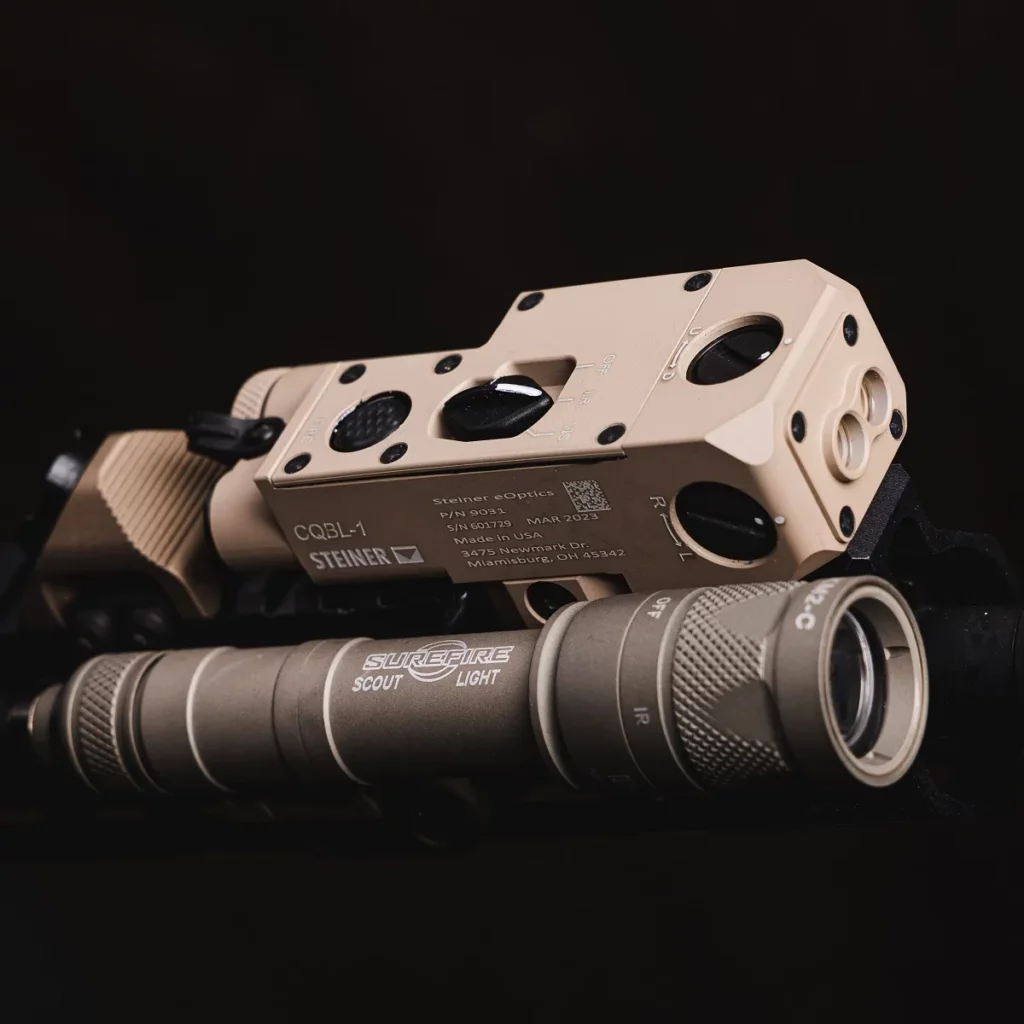
Conclusion
Well done! You now know about the differences in rifle laser sights, which one is best for you, and how to get it zeroed. With your new knowledge, you can have an additional, accurate point of reference when shooting your rifle. Whether for hunting, sport, or defense, your new sight will be more than beneficial.
Remember to take your rifle, environment, and shooting needs/wants into consideration before purchasing a laser. These are important factors that can help you narrow down a laser sight that’s perfect for your needs. Also, pass this information along; you can now help your shooting buddies by teaching them how to zero their sights. If you’re interested in purchasing a laser sight for your rifle, check out our selection here.
